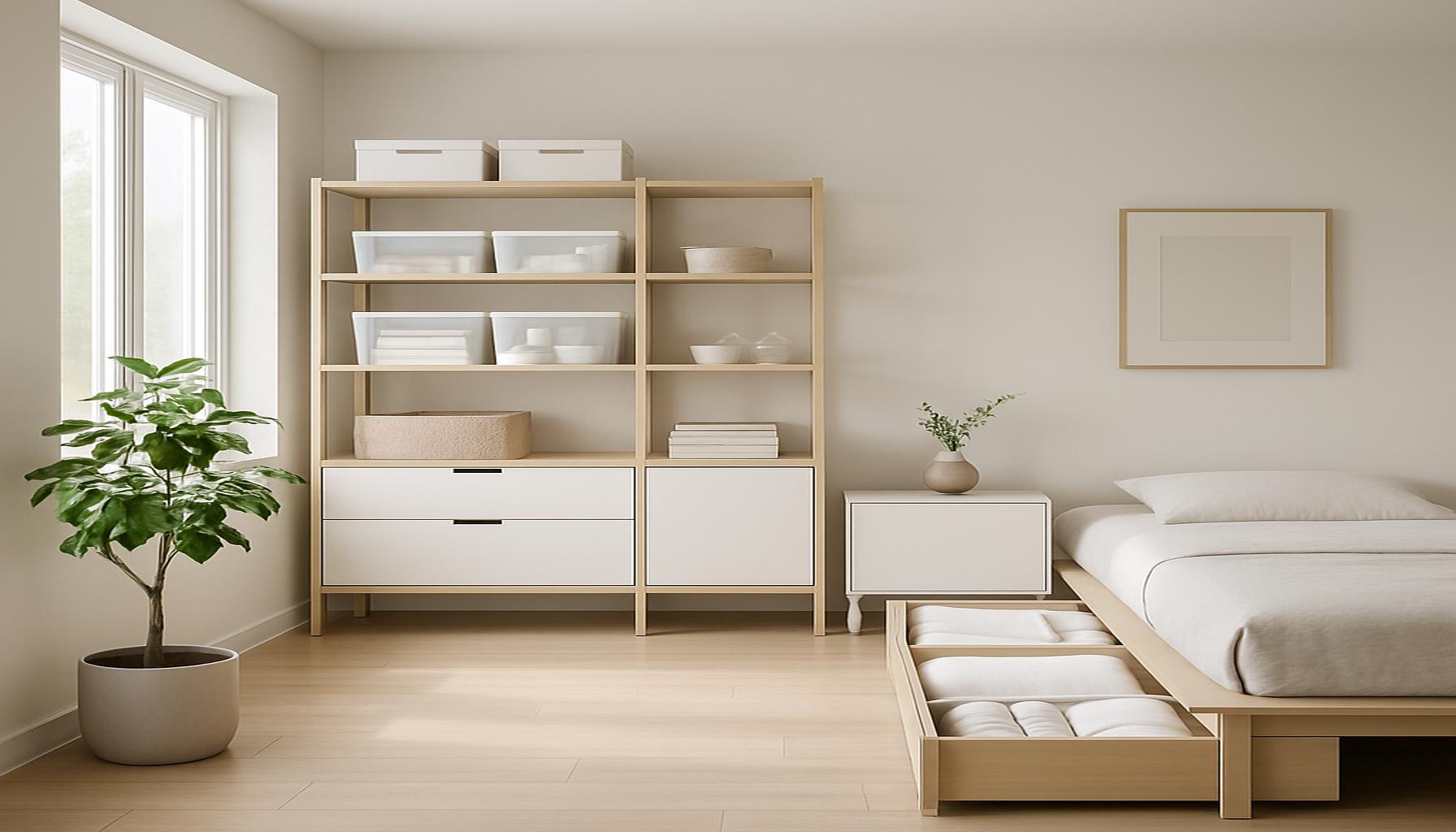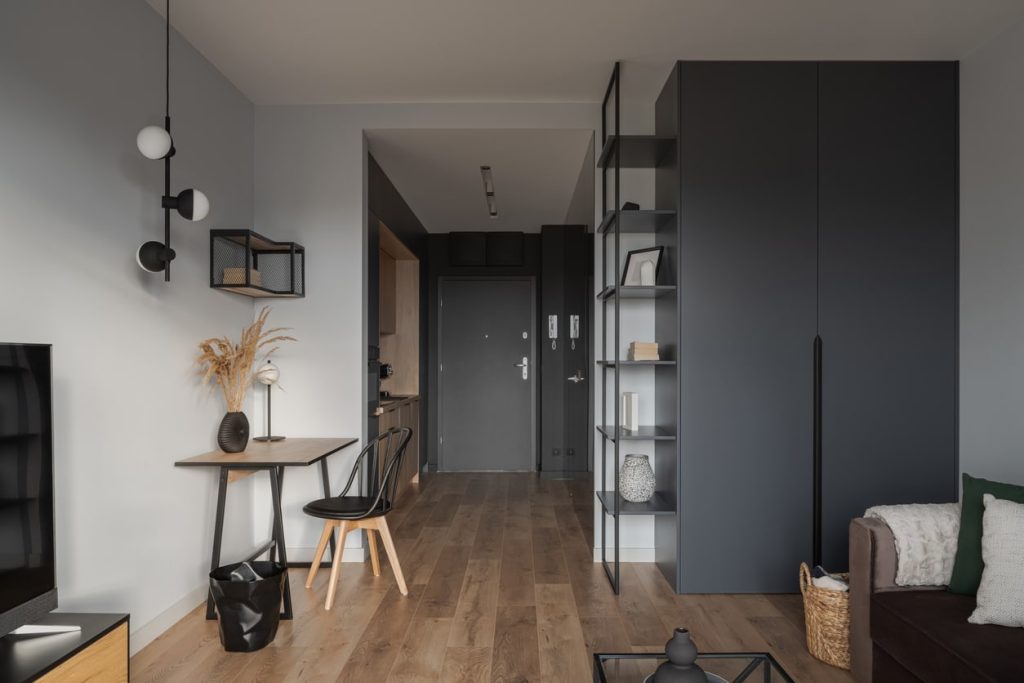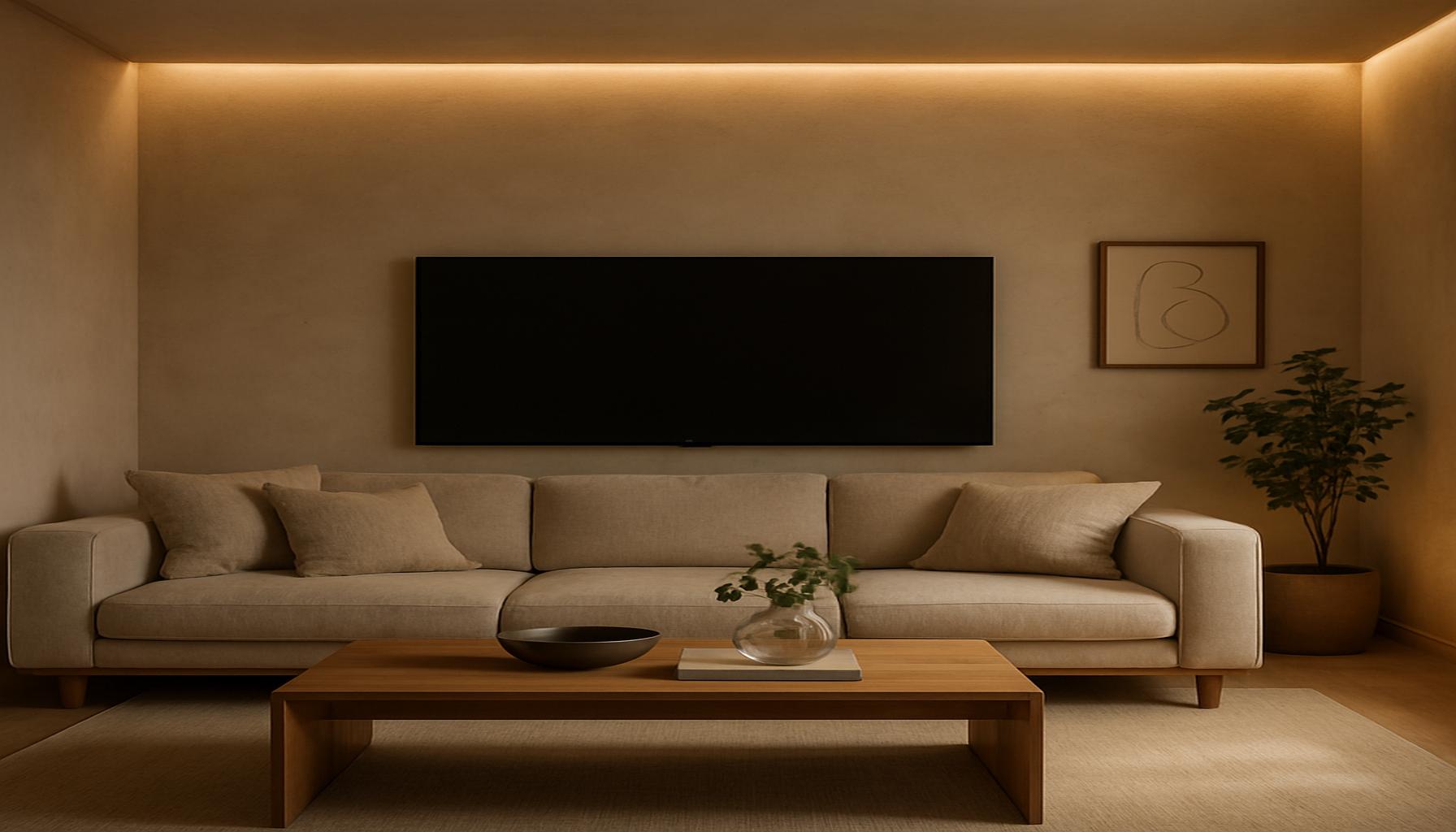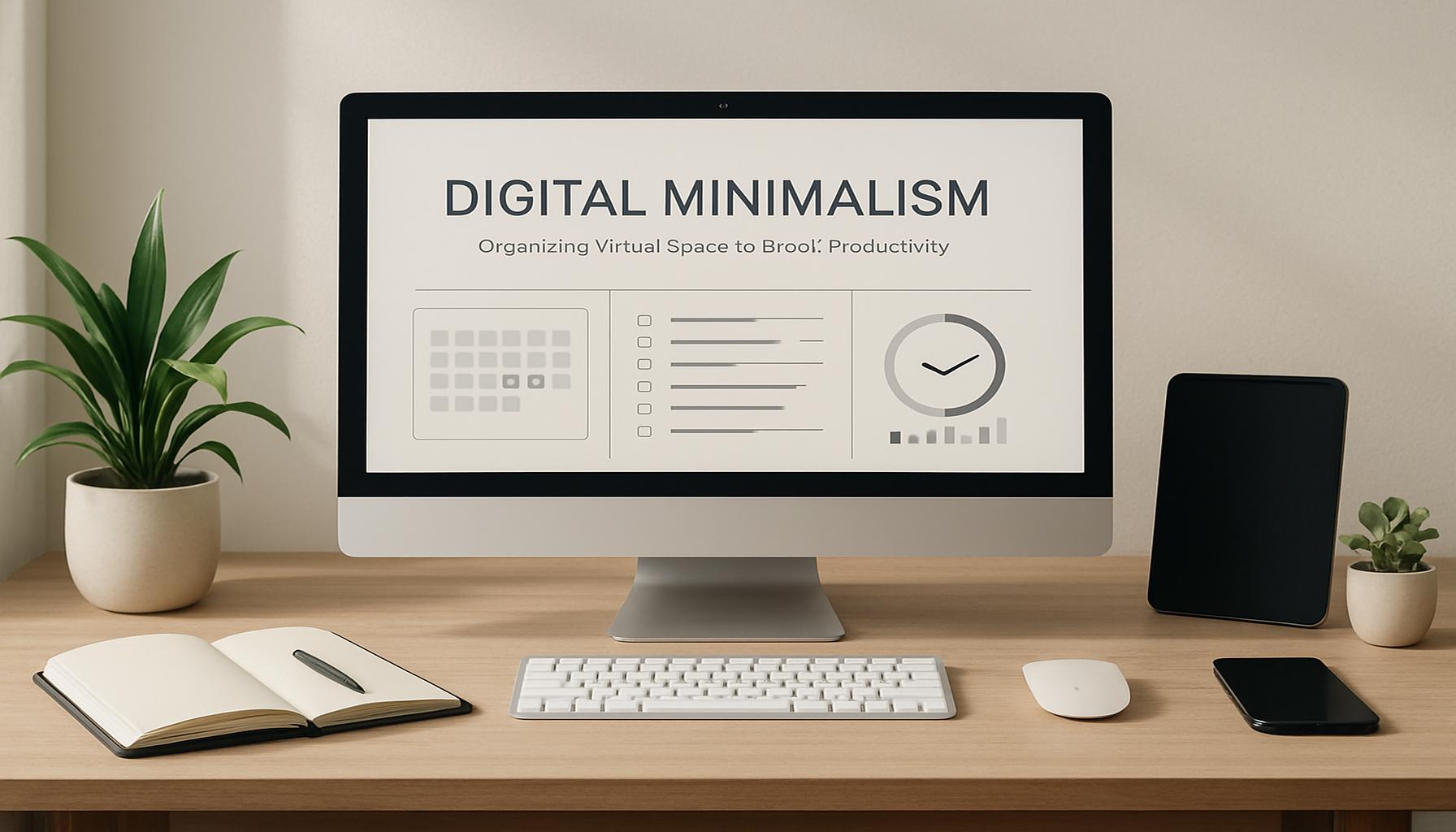The Influence of Minimalism on Storage Space Organization: Creative Solutions for Less Clutter

Understanding Minimalism: More Than Just Design
The concept of minimalism is more than a fleeting trend; it encapsulates a lifestyle choice that prioritizes simplicity and intentional living. In a society overflowing with material possessions and distractions, the minimalist approach serves as a powerful antidote. By encouraging individuals to create more organized spaces, this philosophy has gained traction among many Americans, sparking conversations about the very essence of consumerism and how we choose to occupy our physical environments.
The Rise of Minimalism
As urban living spaces become increasingly compact, the influx of minimalism as a lifestyle choice makes complete sense. Small apartments in cities like New York or San Francisco push residents to reevaluate what they truly need, fostering a dialogue that transcends mere aesthetics. The movement encourages not just a reduction in physical clutter, but stimulates a mental decluttering as well, promoting mindfulness about what we own and how it contributes to our happiness.
Key Aspects of Minimalism
Adopting a minimalist lifestyle can unveil numerous benefits that extend beyond mere aesthetics, including:
- Efficiency: The use of multifunctional furniture—like a coffee table that converts into a dining table—can effectively maximize limited living space. These pieces not only serve multiple purposes but also reduce the need for excessive furnishings, streamlining both visual and physical clutter.
- Decluttering: Regularly assessing possessions encourages mindful decision-making. For instance, the popular “one in, one out” rule compels individuals to remove an item whenever they acquire something new. This not only keeps belongings to a manageable level but also fosters a deeper appreciation for what we decide to keep.
- Creative Storage: Innovations in storage solutions, such as utilizing wall-mounted shelves or incorporating hidden compartments in furniture, can dramatically change the functionality of a space. Embracing these techniques often leads to transformed rooms that feel more expansive and less chaotic.
Rethinking Accumulation
Minimalism invites us to challenge the conventional mindset that equates happiness with accumulation. It urges a critical look at our routines, questioning whether the items we own are genuinely essential. This approach is particularly relevant in the face of the overwhelming consumption culture prevalent today, where retail therapy often masks deeper emotional needs.
Pursuing Functionality and Aesthetics
As living spaces get tighter, especially in metropolitan regions, the principles of minimalism guide residents toward creative and practical solutions for organizing their environments. The result is not just a visually appealing living space, but also one that functions optimally to meet the user’s needs.

In the following sections of this article, we will explore effective strategies for integrating minimalism into daily life, focusing on effective storage solutions that emphasize both beauty and purpose. By embracing the ethos of minimalism, individuals can experience transformative change in their homes and, ultimately, their lives.
DIVE DEEPER: Click here to discover the beauty of simplicity
Transforming Spaces Through Minimalism
The minimalist movement has fundamentally reshaped our understanding of space, leading us to prioritize efficiency and creativity in storage space organization. In contrast to traditional storage methods that often prioritize quantity over quality, minimalism encourages a thoughtful approach to how we use our available space. By embracing minimalism, not only do we reduce clutter, but we also enhance the functionality of our environments.
Creative Solutions for Maximizing Storage
Modern minimalism inspires a host of creative storage solutions that cater to the needs of today’s urban dwellers. Here are some innovative approaches that can help individuals make the most out of limited spaces:
- Vertical Space Utilization: One of the cornerstones of minimalist organization is the efficient use of vertical space. Wall-mounted shelves, pegboards, and hooks can transform blank walls into functional areas, perfect for displaying books, plants, or tools while freeing up floor space.
- Under-Furniture Storage: Letting go of the notion that every item needs to be visible opens up numerous possibilities for concealed storage. Furniture such as beds with built-in drawers or ottomans that double as storage units can keep personal belongings tucked away, contributing to a clean aesthetic.
- Multi-Functional Pieces: Embracing multifunctional furniture—like a sofa bed or a dining table that doubles as a workspace—permits flexibility in how spaces are used. These pieces not only save room but also reduce the number of items needed to occupy a space, aligning perfectly with minimalist principles.
- If It Doesn’t Spark Joy: Inspired by Marie Kondo’s philosophy, an effective decluttering tactic is to evaluate possessions by their emotional impact. Keeping only those items that truly resonate can lead to a more focused and conscious approach to what is stored, ensuring that each item has a place and purpose.
The Psychological Benefits of Minimalist Storage
A decluttered environment not only looks pleasing but can also have profound psychological benefits. Research indicates that a tidy, organized space can lead to reduced stress levels and improved focus. The act of organizing one’s belongings can create a sense of control over one’s environment, fostering a healthier mindset. This connection between physical space and mental clarity is fundamental to the minimalist ideology, where less truly results in more—more clarity, more peace, and ultimately, more happiness.
The Minimalist Mindset in Storage Decisions
As individuals adopt minimalism, they often shift their mindset regarding what constitutes necessary storage. No longer does one simply look for more cabinets or closets; instead, there is a growing emphasis on quality over quantity. Integrating the principle of minimalism into storage decisions encourages deeper reflection on the value of each item retained, questioning its role in one’s life. This discerning attitude extends not just to physical objects but also to how we interact with our environments.
In the continuing journey through minimalism, we will delve further into specific strategies that enable individuals to cultivate organized, serene spaces while facilitating a lifestyle that values what matters most. By exploring these creative storage solutions, we can pave the way for less clutter and a more intentional way of living.
While minimalism has gained immense popularity as a lifestyle choice, its impact on storage space organization deserves focused attention. The essence of minimalism lies not just in reducing clutter but in creating a harmonious living environment that emphasizes functionality and simplicity. Recognizing the profound influence of this philosophy, homeowners and organizations alike are turning to creative solutions that align with minimalist principles. Innovative storage solutions that prioritize efficiency and aesthetic appeal are transforming spaces. One approach involves the use of multifunctional furniture. For instance, ottomans that double as storage bins or coffee tables with built-in compartments allow for a clean and orderly appearance, managing clutter effortlessly. A study from the Journal of Environmental Psychology shows that simplifying one’s physical surroundings can lead to improved mental clarity and focus, an added benefit that resonates with minimalism advocates.Another key aspect involves *smart organizing systems*. Vertical storage options, like floating shelves and wall-mounted hooks, utilize available space without overwhelming the aesthetic. This not only preserves floor space but also encourages a thoughtful arrangement of items, which can serve as décor rather than mere storage. Integrating technology with organization, such as using apps to track inventory or suggest decluttering schedules, exemplifies how a modern minimalist approach can enhance both functionality and experience.The psychological benefits of embracing minimalism extend beyond mere aesthetics. Research highlights that reduced clutter can lead to lower stress levels, as a clear space often promotes a calm mind. In a world increasingly bombarded by distractions, this clarity provided by organized storage aligns seamlessly with minimalist values. Consequently, individuals are empowered to make wiser decisions, leading to a lifestyle deeply rooted in intentionality and purpose.In essence, the influence of minimalism on storage space organization introduces a shift towards creative solutions characterized by mindfulness, utility, and elegance. As more people recognize the advantages of decluttering, from financial savings on storage solutions to the emotional benefits of a serene environment, the principles of minimalism will likely continue to inspire innovative approaches to space organization. To further explore the transformative power of minimalism in your own space, consider how you can implement these strategies to reduce clutter and enhance your overall quality of life.
DISCOVER MORE: Click here to learn about efficient workspace strategies
Embracing Minimalism in Different Areas of the Home
Minimalism isn’t just a philosophy; it’s a practical foundation that can be applied across various areas of the home. By integrating minimalist principles, homeowners can achieve not only an organized space but also a harmonious environment that promotes wellbeing. Let’s explore how minimalism can specifically influence storage organization in vital areas of the home:
Kitchen: Streamlining Culinary Spaces
The kitchen is often the heart of a home, yet it is also a frequent haven for clutter. Adopting a minimalist approach here means curating your kitchenware to essentials. Open shelving can not only visually enlarge the space but also encourage users to keep only frequently used items visible, such as a select few plates, pots, and utensils. This invites a practiced focus on culinary simplicity, making cooking a pleasurable experience rather than a chore filled with distractions.
Modern innovations recently introduced gadgets that cater to this minimalist lifestyle. For example, multi-use appliances like air fryers or Instant Pots replace multiple single-purpose devices, ultimately saving both cupboard space and counters from chaos. Implementing clear containers for pantry items aids in maintaining an organized view that is both aesthetically pleasing and functional.
Living Room: Crafting Inviting Yet Functional Spaces
In the living room, minimalism offers a refreshing glow of calmness. Emphasizing open spaces and natural light fosters an inviting ambiance. Here, decluttered surfaces can be achieved by incorporating hidden storage within coffee tables or entertainment units. An increasingly popular trend features minimalist media consoles that seamlessly blend technology with sophistication while maintaining a clean look.
A minimalistic living room design often embraces a monochromatic or neutral color palette, allowing for a few intentional pops of color through accessories such as cushions or throws. This balance not only reduces visual clutter but also heightens a sense of tranquility, providing a true escape from the busyness of life.
Bedroom: Creating a Personal Sanctuary
The bedroom should evoke serenity and relaxation, serving as a personal retreat at the end of the day. A minimalist approach here involves simplifying decor and using storage solutions like under-bed boxes or decorative baskets to maintain order while ensuring easy access to belongings. Layered bedding can add texture without crowding the overall aesthetic, resulting in a more peaceful atmosphere.
Additionally, decluttering nightstands or dressers by placing only essential items within reach and incorporating a few minimalistic decorative elements can promote mindfulness before sleep. This practice aligns with the minimalist philosophy of creating spaces that serve a specific purpose, reducing distractions in our most personal environments.
Office Space: Fostering Focus and Creativity
In a world where remote work is becoming the norm, a minimalist home office can spark productivity and creativity. Streamlining your workspace means investing in a few high-quality tools rather than an abundance of supplies. Choose multi-storage organizers to keep documents, books, and tech accessories neatly tucked away. A tidy desk enhances focus and encourages a clear mind, essential for inventive thinking.
Incorporating plants can breathe life into a sparse office, promoting not only aesthetic appeal but also oxygenation and psychological wellbeing—vital elements for enhancing productivity. The minimalist approach fosters a work environment that supports intention and reduces distractions, allowing for creativity to flow seamlessly.
Each of these spaces demonstrates how minimalism organically influences storage space organization, guiding us toward creative solutions that embrace functionality while reducing clutter. By immersing ourselves in a minimalist lifestyle, we cultivate an intentional environment that communicates clarity and purpose throughout the home.
DISCOVER MORE: Click here to enhance your productivity
Conclusion: A Pathway to Clarity through Minimalism
In a fast-paced world filled with distractions and overflowing possessions, embracing minimalism offers a transformative pathway to clarity and order. The principles of minimalism, when applied to storage space organization, extend beyond mere aesthetics; they cultivate an environment that fosters peace, productivity, and intentional living. By refining our belongings to what truly serves us, we create spaces that not only look beautiful but also enhance our emotional and psychological wellbeing.
As we’ve explored in various areas—from the kitchen to the office—simple adjustments can lead to profound changes. The use of innovative storage solutions, such as hidden compartments and multi-functional furniture, showcases the creative possibilities available to us. These methods challenge conventional standards of comfort and utility, urging us to rethink how we interact with our spaces. Ultimately, a minimalist approach allows homeowners to enjoy their environments while dealing with less clutter, a notion that resonates deeply in contemporary American living.
It is essential to recognize that minimalism is not merely a trend but a holistic lifestyle choice that can lead us to a more meaningful existence. By making conscious decisions about what we keep and how we organize our spaces, we can reclaim our homes as sanctuaries that reflect our values. For those embarking on this journey towards less clutter, remember that the true essence of minimalism lies in clarity, purpose, and a thoughtful curation of our surroundings. Let this philosophy inspire a more intentional way of living that maximizes both space and serenity.


